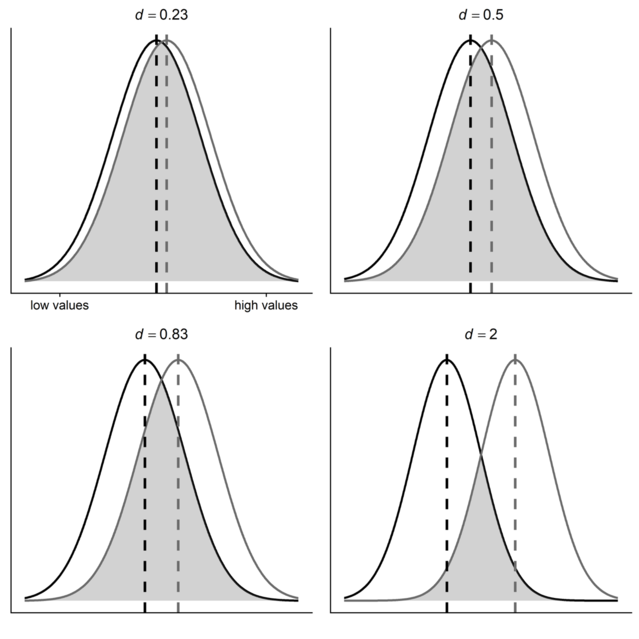Sex
Do Men and Women Differ in Psychological Characteristics?
A recent review summarizes current evidence on sex differences.
Posted July 31, 2019

Do men and women, in general, differ from each other in psychological characteristics? Recently, John Archer summarized current empirical evidence on this topic by conducting a systematic review of corresponding meta-analyses and large-scale surveys, and linked observed differences to evolutionary theorizing. Let's see what the results of this investigation say about differences between men and women.
Preliminary note: For many years, research on gender/sex differences has virtually exclusively focused on differences based on a categorization of people into men and women. Thus, I will neither refer to dimensional approaches to gender/sex differences, nor to (non-)differences concerning third gender/sex in the following. However, psychological research in these regards is flourishing and might thus provide first summaries in the near future. Also, please note that the presented findings should be interpreted from a general and, in turn, simplifying perspective.
Men and women differ from each other in…
Starting to look at observed differences, men tend to have higher levels in some—but not all of the investigated—variables from the field of aggression and violence. For instance, men tend to show more same-sex verbal and physical aggression, weapon use, and violent crime. Importantly, the magnitude of the sex differences differs across the variables. Indeed, Archer’s meta-analysis allows to quantify the sex differences in line with common classifications in psychology, and the observed differences fall into different categories.
For a better illustration, Figure 1 shows four exemplary magnitudes of sex differences (different Cohen's d-values; Cohen's d is a statistical estimate reflecting differences between groups), ranging from what is typically considered a rather small effect (i.e., rather small difference) to what is typically considered a very large effect. As can be seen therein, the average value (dashed line) of one gender (one curve) can be rather close to or different from the average value of the other gender, and the overlap of the value distributions for each gender (the grey colored area) can be rather small or large (depending on d).

Going back to the field of aggression and violence, Archer’s findings strongly suggest that there is an increase in the magnitude of sex differences as the danger involved in showing specific behavior increases. That is, small to medium effects (i.e., smaller d-values) were found for measures of same-sex verbal and physical aggression, whereas larger sex differences were found for weapon use and violent crime (and, ultimately, committing homicide). Relatedly, men tend to show higher levels in sexual aggression (medium effect) and rape (very large effect).
Turning from destructive, negative behavior to positively connoted social relations, women show higher levels in agreeableness, emotional intelligence, smiling (all small to medium effects), empathy, and social interests (with large effects for the last two). Women do also show higher levels in some constructs indicating a particular interest in close relationships such as disclosure to the same sex and peer attachment (both medium effects).
With regard to other characteristics, relatively consistent differences were found concerning variables in the realm of fearfulness, impulsivity, and risk-taking. Here, men tend to show higher levels in, e.g., excitement- or sensation-seeking, risky impulsivity (all small to medium effects), or pain tolerance (very large effect). Women, by contrast, tend to show higher levels in, e.g., reported fear (medium effect) and effortful control (rather large effect). Further, the summary found some differences in spatial abilities (with men showing higher levels in all considered variables except for object location memory; note, though, that the magnitudes of the sex differences differed from small to large), object-centered orientations (with men showing higher levels in, e.g., interest in things; large or very large effects), and language and related attributes (with women showing higher levels in, e.g., language ability, speech production, or writing; small to medium effects). Another field of consistent sex differences was sexuality, with men showing a higher tendency for, e.g., masturbation, pornography use, and casual sex (all medium effects).
Men and women do not differ in…
Next to these and other differences not reported herein, it might also be interesting to consider variables in which men and women do—according to Archer’s quantitative summary—not differ from each other. For instance, there was no indication of sex differences in the frequency of anger, indirect same-sex violence, or same-sex competitiveness. Further, there was no indication of sex differences in cooperativeness, overall impulsivity, quantitative abilities (or abilities in mathematics in more detail), overall working memory capabilities, or general knowledge.
Why do men and women differ from each other?
Overall, currently available data suggest that men and women differ from each other with regard to some characteristics. Notably, most of the observed differences appear to be rather minor (with psychological interpretations of small to medium effects), although some more substantial differences were also observed (e.g., concerning same-sex violent crime or empathy). From the several explanations why men and women differ from each other in some characteristics, the current data support the idea that sex differences have evolved as responses to evolutionary processes. More precisely, in particular inter-male sexual competition (leading to, e.g., more severe forms of same-sex violence in men than in women), greater parental investment of females (leading to, e.g., higher levels of fearfulness in women), and greater importance of social relations for women than men (it is argued that it has been especially adaptive for women to form few, close relationships, which might result in, e.g., higher levels in disclosure to same sex or empathy) have been proposed as evolutionary-based explanations why men and women differ in some characteristics from each other.
References
Archer, J. (2019). The reality and evolutionary significance of human psychological sex differences. Biological Reviews, 94, 1381-1415. https://doi.org/10.1111/brv.12507


